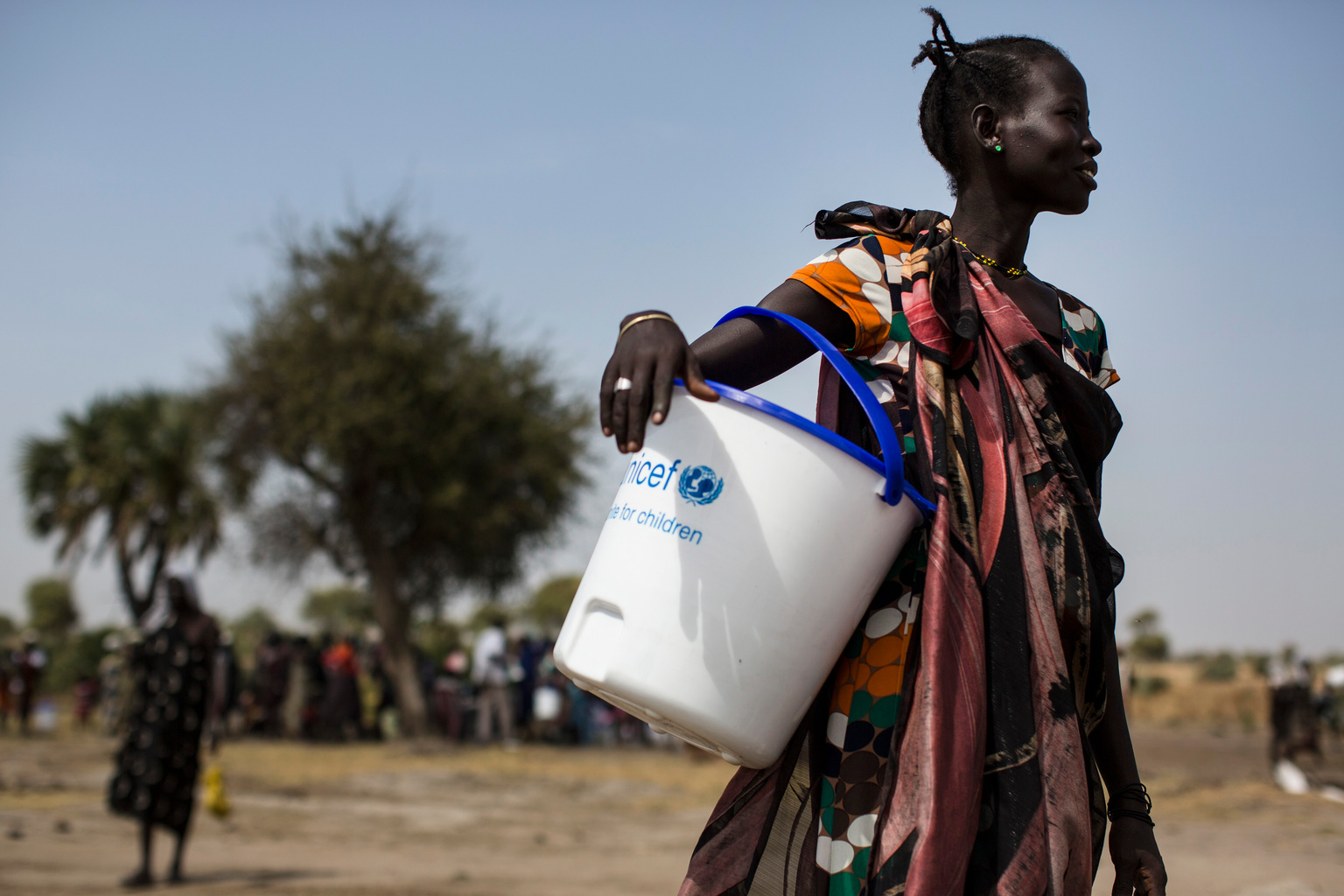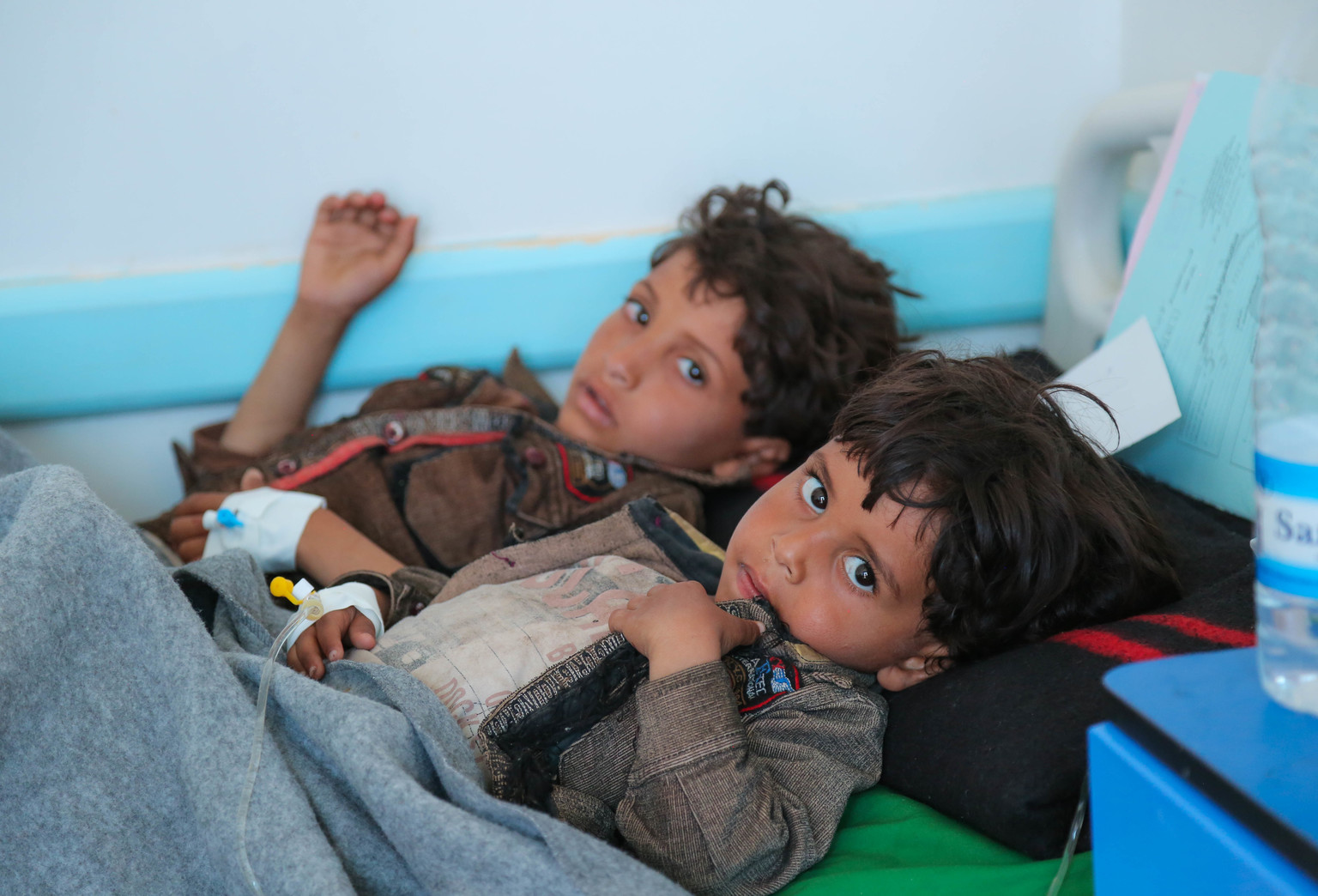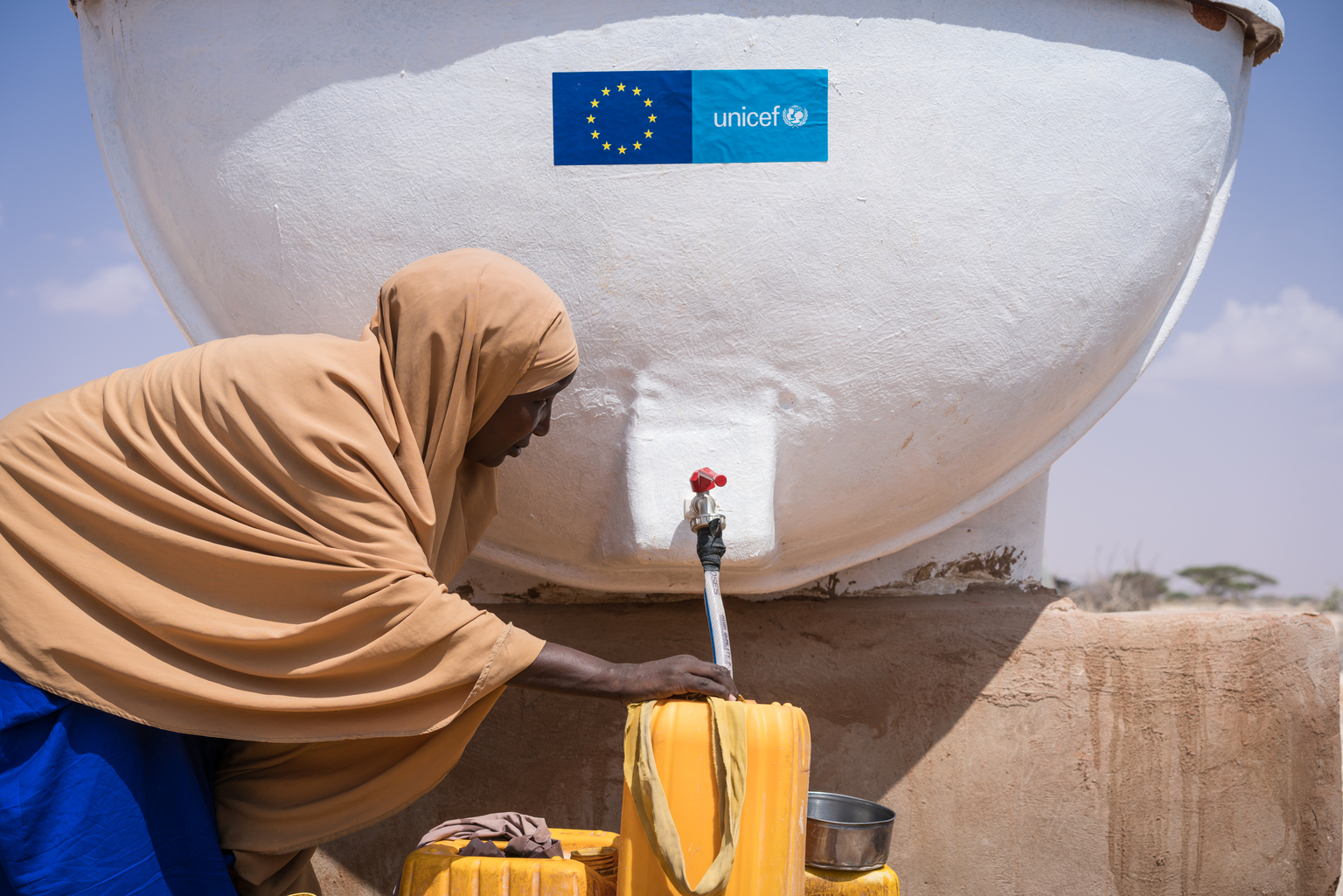水與饑荒──你要知道的4件事
2017-09-01
© UNICEF/UN055942/Gilbertson
衝突、旱災、流離失所、疾病正引發大規模人道主義危機,導致也門、索馬里、南蘇丹、尼日利亞東北部2,000萬人面臨饑荒威脅,有近140萬嚴重營養不良兒童面對死亡威脅。
嚴重旱災對非洲之角造成巨大影響,饑荒危機正向周邊國家蔓延。超過100萬名南蘇丹難民逃離衝突,烏干達人口急速增長,引致資源嚴重短缺。衝突、氣候變化、環境退化、貧困等原因導致整個乍得湖盆地的居民流離失所。
饑荒讓人聯想到食物匱乏,但危機已逐漸發展,不僅包括糧食安全問題,還包括清潔食水、環境衞生設施、醫療保健等,特別是疾病防治問題。對於面對饑荒和糧食安全問題的兒童及家庭,水和環境衞生同樣重要。當中有4個原因:

© UNICEF/UN053466/Modola
在南蘇丹聯合州盧布奎村的緊急應變計劃中,婦女提着聯合國兒童基金會捐贈的水桶。
1. 衝突
衝突是造成4個國家出現饑荒的共同原因,令供水和衞生設施受破壞或摧毀。也門激烈戰爭持續兩年,導致城市供水系統損壞,各大城市的生命線幾近崩潰。在尼日利亞東北部受衝突影響的地區,自衝突爆發以來,75%供水和環境衞生設施被毀壞。南蘇丹戰爭持續超過三年,近半供水點被完全損毀。

© UNICEF/UN057031/Hatcher-Moore
在南蘇丹朱巴郊區,17歲的阿邁爾推着手推車,放有一桶從水龍頭提取而未經處理的食水。
2. 旱災
氣候變化、旱災、洪水等極端氣候造成水源枯竭或受污染,威脅整個社區賴以生存的食水質量和數量。在水資源極度匱乏的地區,各家各戶要爭奪短缺或不安全的水源,居民被迫逃離家園,感染疾病的風險也隨之增加。索馬里2016年爆發嚴重旱災,導致人道主義危機迅速惡化,目前情況已蔓延到大部分地區。非洲之角其他國家也受到影響,特別是吉布提、埃塞俄比亞和肯尼亞。南蘇丹季節性旱災令人與動物之間的用水衝突加劇,導致原本短缺的水資源被過度利用。自1963年,由於氣候變化和人口壓力,西非乍得湖的水量已損失約90%,為該地區帶來嚴重糧食安全問題。

© UNICEF/UN065871/Alzekri
兒童在也門首都薩那的撒比恩醫院裏接受疑似霍亂個案的治療。
3. 疾病和營養不良
不安全食水和被損毀的環境衞生設施可導致營養不良,或病情惡化。聯合國兒童基金會(UNICEF)緊急援助項目主任曼紐爾‧豐泰內表示:「營養不良兒童無論攝取多少食物,只要還有食水安全問題,他們的狀況就難以改善。」不安全食水會導致腹瀉,令兒童無法獲得生存所需營養,最終導致營養不良。營養不良兒童也更容易感染霍亂等水媒疾病。全球約有21億人無法獲得安全食水。

© UNICEF/UN057061/Abubakar
扎拉從位於尼日利亞邁杜古里巴卡西國的難民營為家裏取水。
4. 流離失所
當戰爭或旱災迫使人們離開家園,兒童及家庭更容易被虐待和受健康問題威脅。流離失所兒童只能使用不安全的食水。缺乏廁所的臨時營地成為疾病爆發熱點,脆弱的兒童更容易感染疾病,在逃亡過程中,往往沒有醫院和醫療中心。受饑荒影響4個國家中,共約830萬人流離失所。

© UNICEF/UN061107/Knowles-Coursin
年輕女子在索馬里加爾卡尤的國內難民營取水回家。
UNICEF如何提供援助
UNICEF正為受饑荒影響地區超過250萬人提供安全食水,幫助他們對抗饑荒。
為保護兒童的生命,UNICEF採取的行動包括:每天向流離失所者營地運送數千升水;為醫院和霍亂治療中心提供支援;修復城市大型供水系統和衞生措施等。
- 自年初以來,UNICEF在也門進行一系列救援工作,超過500萬人受惠,其中包括:供水網絡和廢水處理項目(例如為維持水處理和泵站運作提供燃料和電力供應)運營、水源氯處理、食水運輸、分發個人衞生用品包等。
- 在南蘇丹受霍亂影響的地區,UNICEF已挖出22個鑽孔,超過21萬人獲得安全食水。全國約有20.7萬人獲得環境衞生設施,61萬人獲得安全食水。
- 在尼日利亞東北部受衝突影響地區,UNICEF與伙伴攜手為約84.5萬人提供安全食水。很多食水、環境及個人衞生(WASH)工作人員要冒生命危險為有需要幫助的人提供基本服務。
- 索馬里有166萬人獲得臨時安全食水,超過89萬人獲得個人衞生用品包,對預防疾病傳播十分重要。









